I’ve recently been digging through folders and shoeboxes, looking for photos I shot in Venice in January 1995. That was a painting trip, but of course I took some cameras with me, including a Mamiya RB67 – a medium format camera in which I shot Fuji Velvia 50.
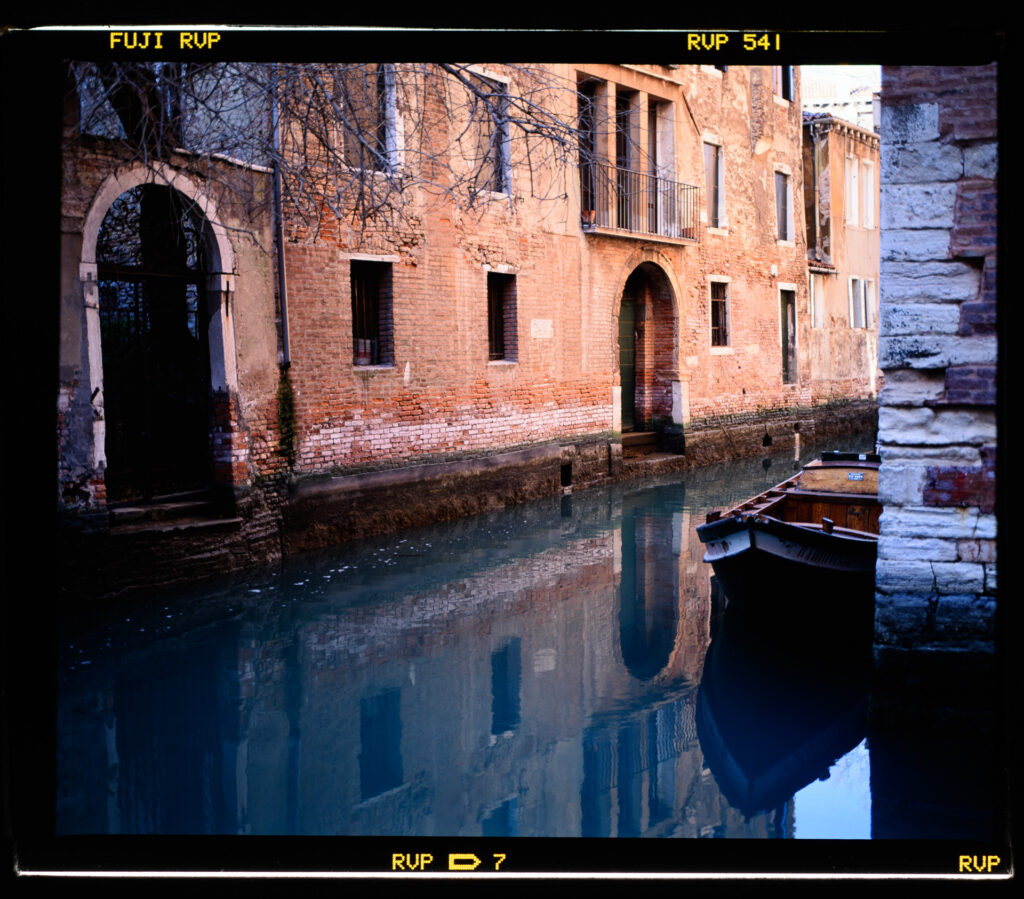
I’ve written another piece about that trip, focusing on the Polaroid SX70 I shot, and you can see that here if you wish. I’m not quite sure why I took the RB67 with me. It didn’t really make sense in terms of the main aim of the mission which was to produce watercolour paintings for exhibition. After all these years my recollections are foggy, but I think I took the RB because at the time I was making some money shooting commissioned travel pieces for a wine magazine over here in Australia and thought maybe I could do a freelance story on food in Venice and pitch it when I got home.
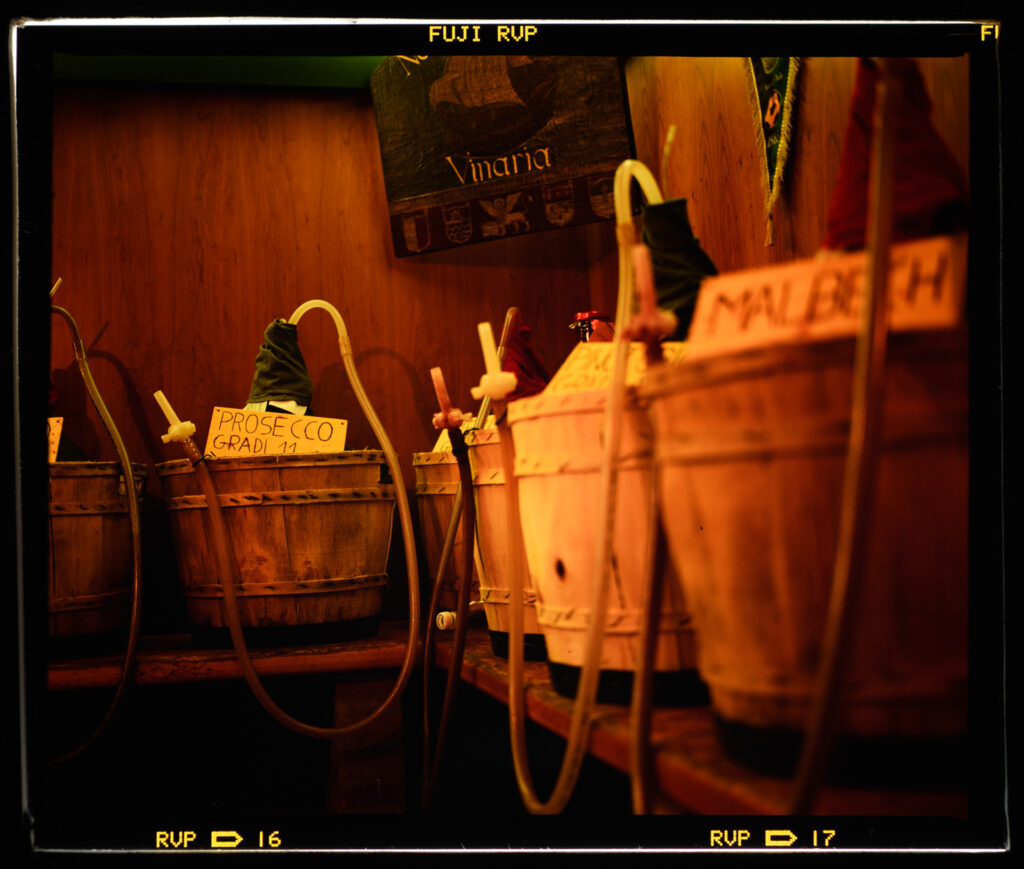
Another piece in the puzzle was that once I arrived in Venice I unexpectedly discovered a camera shop that did 24 hour E6 processing, so I could take my 120 Velvia in and pick it up the next day, see how it turned out and buy more film. Normally I’d shoot that sort of thing on 35mm, but I did not have a 35mm SLR with me – just a little Minox 35GT and my Polaroid SX70.
So because I could get this processing done and replace the film I shot, I ended up with more 120 transparencies than I intended, and to meander towards the point of this piece I recently found a few rolls I had forgotten about and so I digitised them.
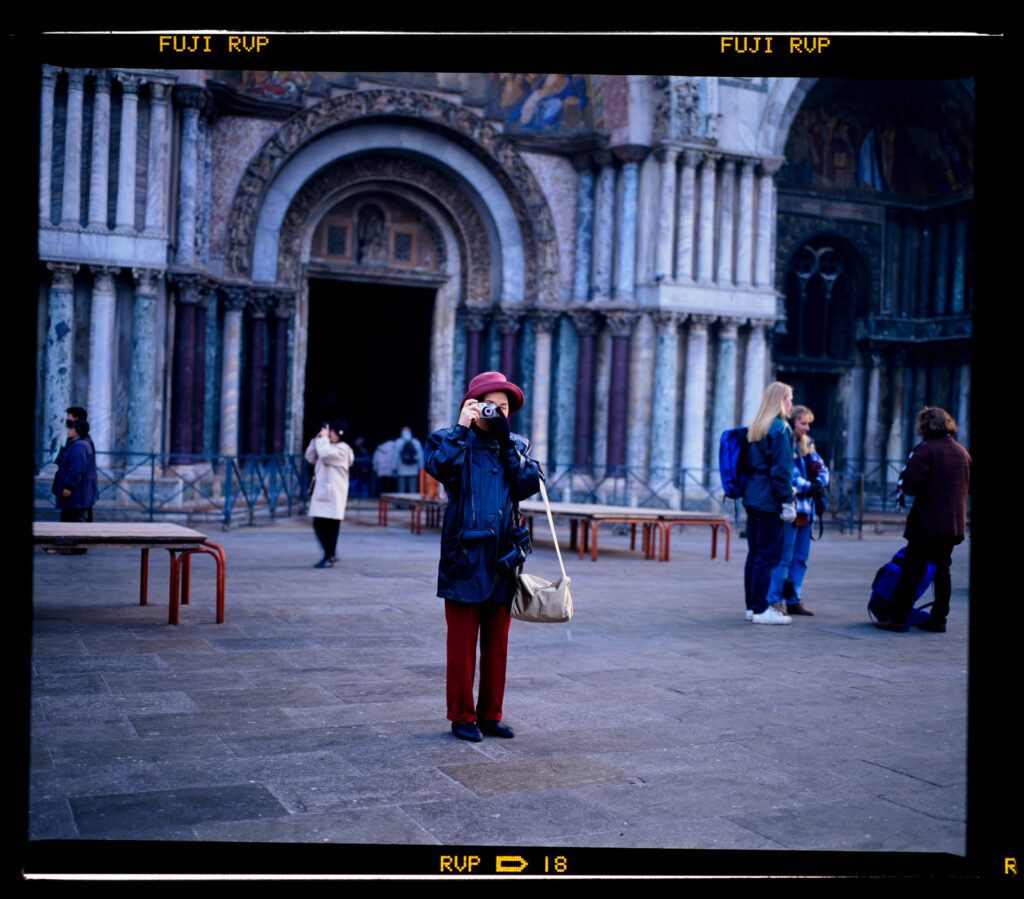
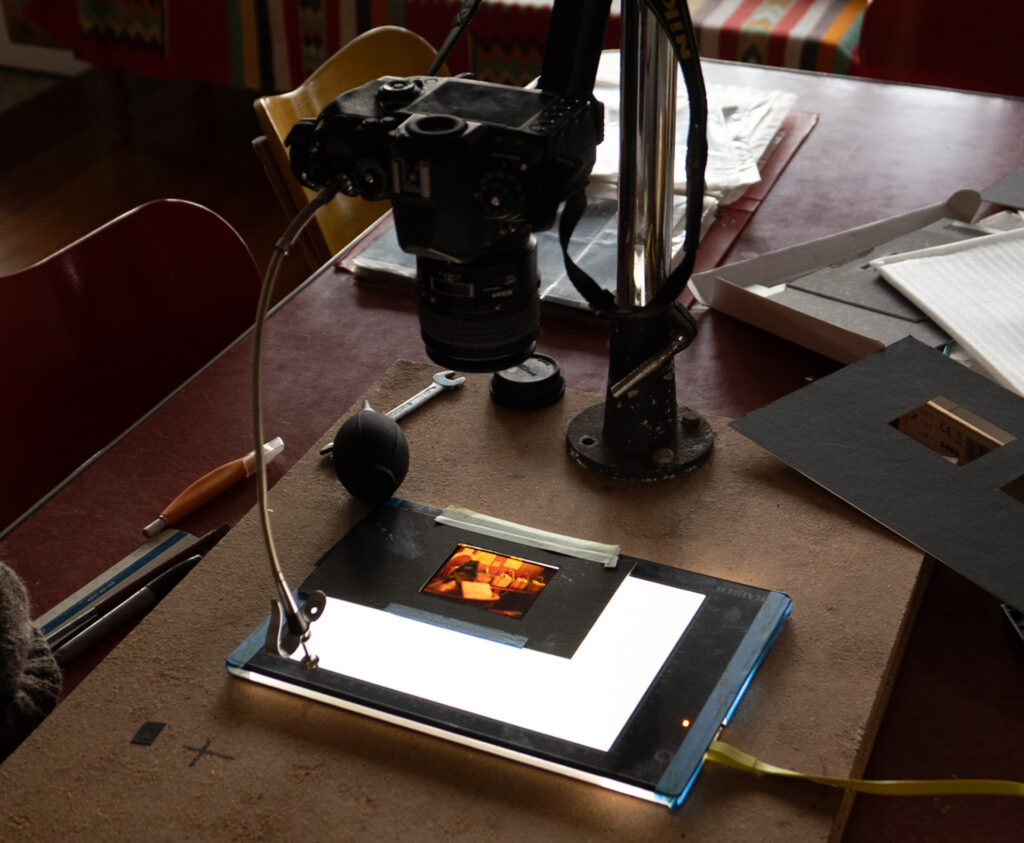
The Tech:
I will insert here a little piece about how I took these shots and the recent digitisation process, because what you’re seeing on screen of course are not the original transparencies; you’re looking at how your screen interprets the WordPress interpretation of my scans of those transparencies. And for what it’s worth, I’m pretty darned happy with how I digitised them. I think that what shows up on my colour corrected monitor at home is very close to the originals. I’m happy partly because it was so simple. I shot them with a Nikon Df and a nice Nikkor 60mm AF-D macro on a Kaiser Plano light pad. Camera set to Standard raw with white balance matching the Plano. The In-Camera settings (not Adobe Colour) were applied on import to Lightroom and no other adjustments were made. Manual exposure was set on what I gauged to be a pretty neutral slide and not changed. The files were then cropped and exported to jpeg. Bingo. You’ll notice I’ve gone a bit dogma on them and included the borders. This is because I’m using them in a book alongside Polaroids and so I would want them all cropped consistently, and no one crops Polaroids, right?
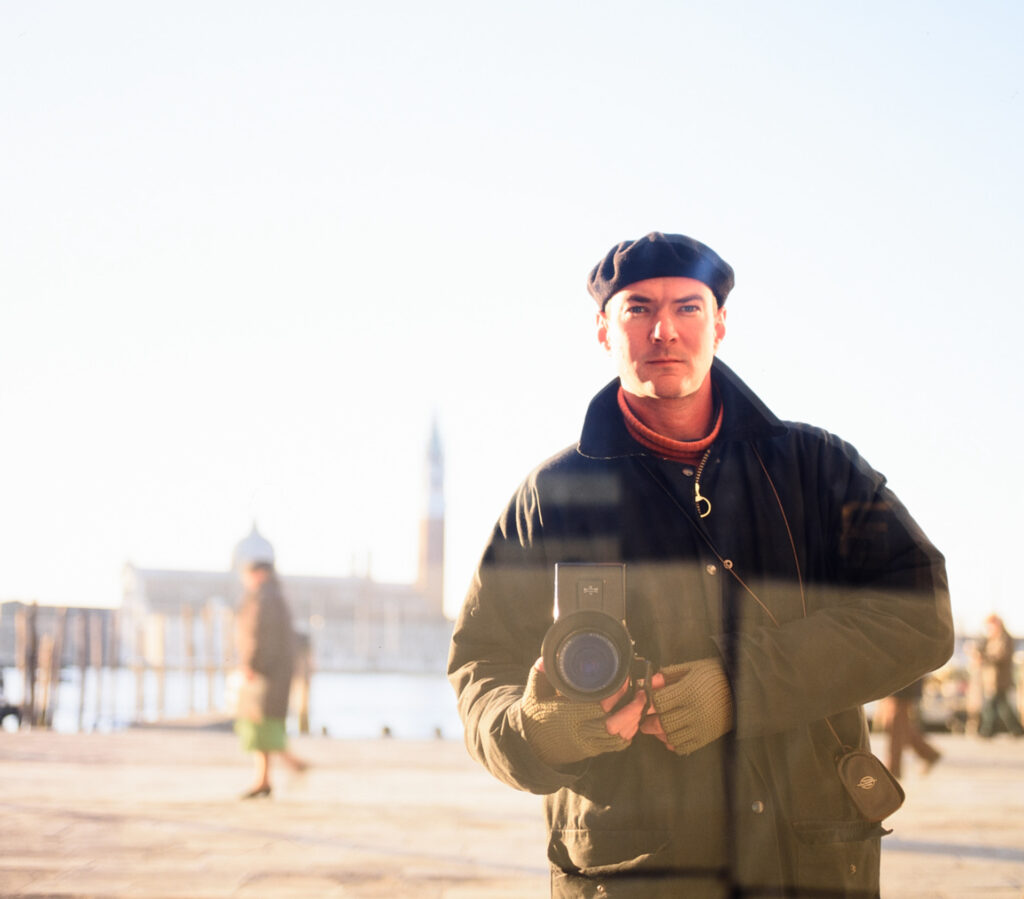
All these are handheld, and metered with a Weston Master V (inherited from my grandfather.) I used reflected or incident settings depending on the situation. I would generally have been pushing the limits on these. Except the demo window selfie they are probably wide open, maybe 1/15s. Perhaps down to 1/4s in the wine shop.
Back to the Shots:
They now have a different purpose, (there’s a lesson here too about how it’s good to archive everything of course) and I am hoping to use them to go with little pieces of text I’m writing to describe that experience of being in Venice. The pictures that interest me now are less of a record of place and more about mood than they are about anything else.
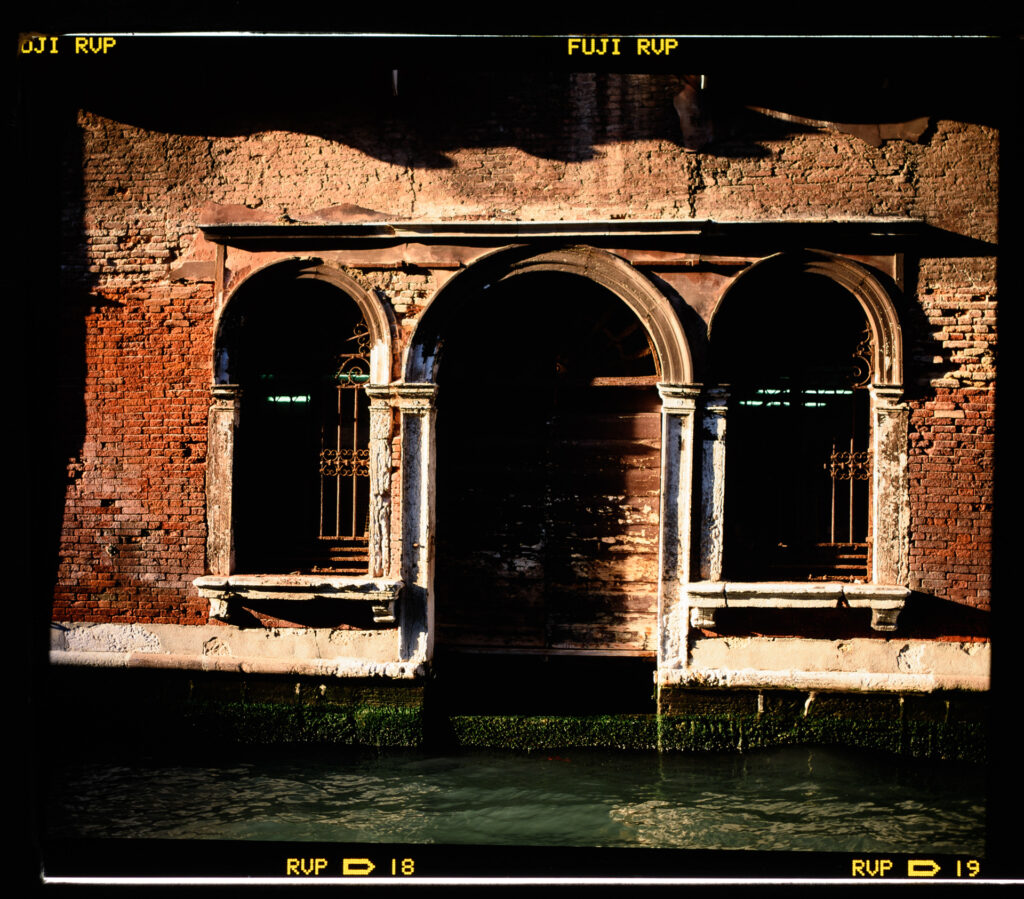
This is where I’m finding it interesting and is what gave rise to this piece; because my favourite shots – the ones I’m sharing here and the ones that I hope to use in my book – are not technically the best ones. They are not the ones I would expect an editor to have liked back in the day. Often they’re quite blocked up in the shadows, there’s blur, and the highlights are pretty much blown. But I’m finding there’s something about them that is now appealing. And so, here’s the question: is this look something I created deliberately, or is it more an artefact of working within the constraints of the medium?
This piece then, is a meditation on that idea. It’s part of an ongoing conversation about whether what we now call a “film aesthetic” (or in this case it might be the “Velvia look”) was ever a conscious choice, or whether it’s something that emerged from a set of physical limitations.
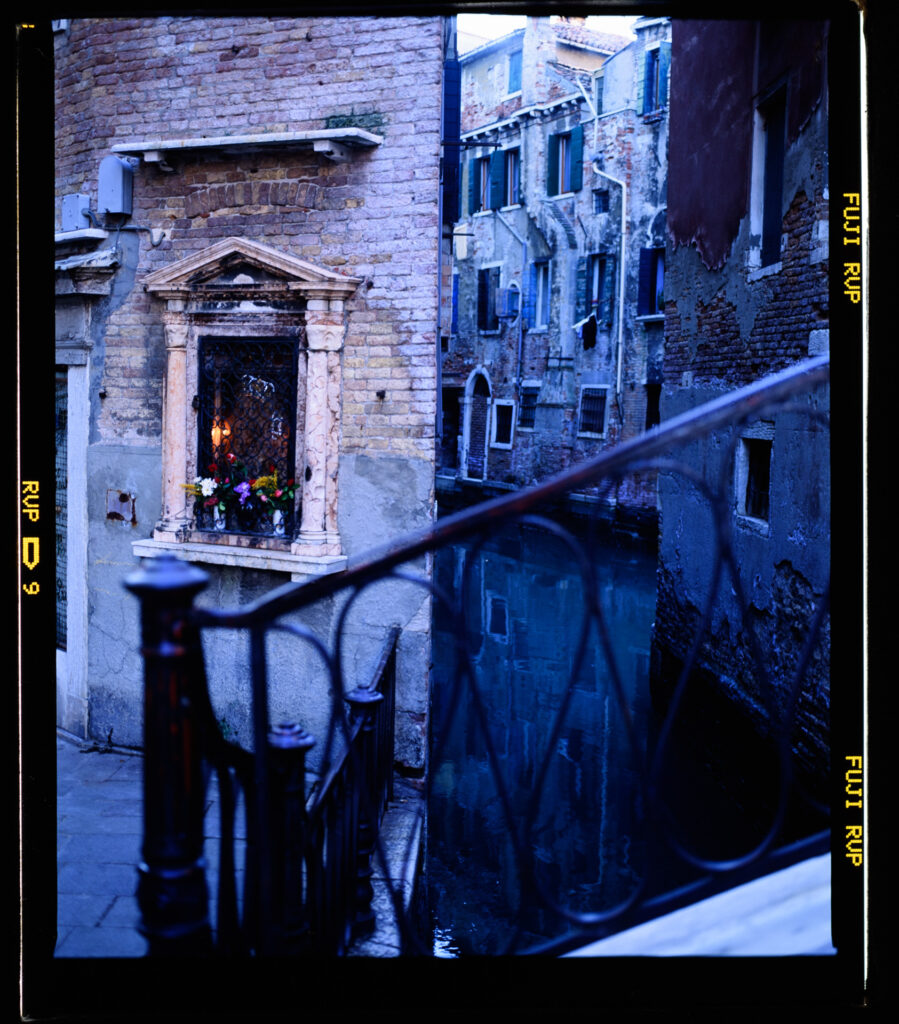
And another part of the conversation is the nature of photography. How much are these images representations of the world, and how much are they objects in themselves? For what it’s worth I don’t think it’s one or the other, and I don’t think coming to a particular answer is particularly interesting. What I DO think is interesting is the conversation, and the range of ideas that can evolve from it.
So – what I feel I’m doing here is observing that Velvia had certain characteristics – even compared to other films of the time – slow speed, limited dynamic range (high contrast) and high saturation. Rather than view these as limitations, I’m choosing to lean into them, take advantage of them to form a particular aesthetic.
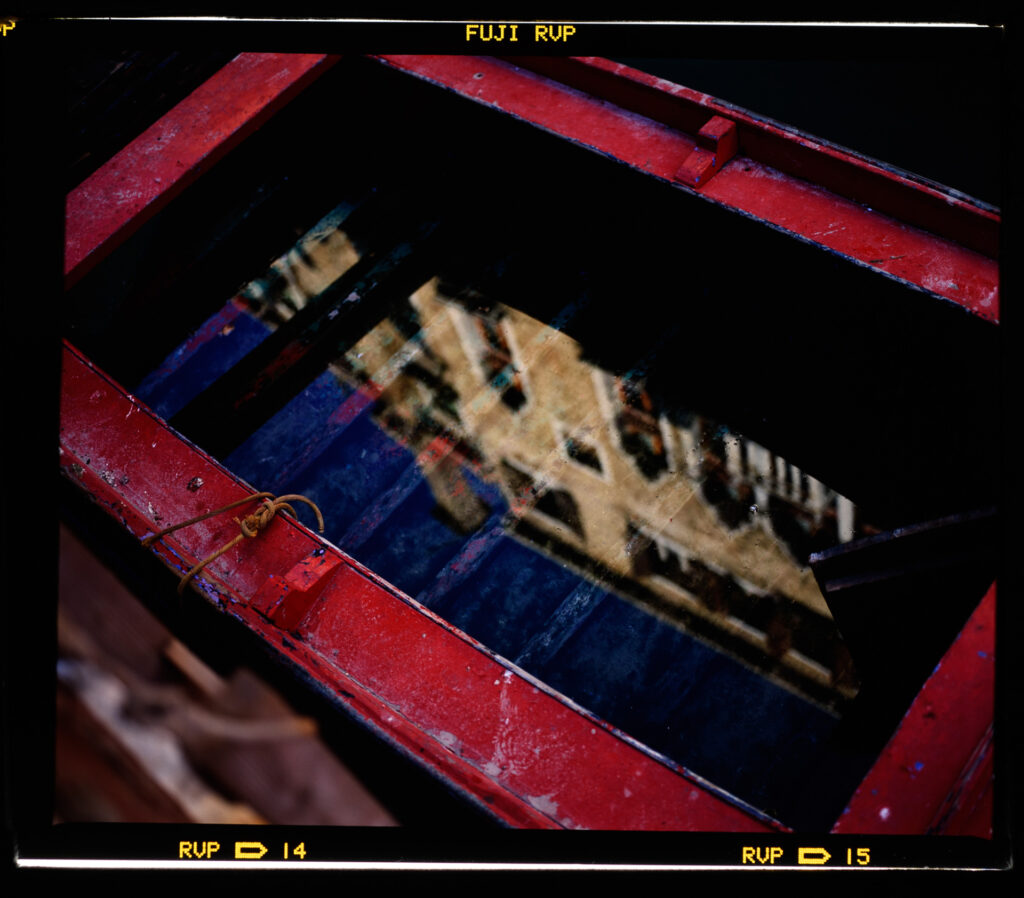
I also think it’s worth acknowledging that limitations aren’t a bad thing. They can guide, and help us to focus and refine. They can lead to an aesthetic coherence that is harder to find when there are too many options.
What I see now in these Velvia frames is not just a memory of Venice in winter, but a memory of working with a medium that required patience, attentiveness, and a willingness to accept its terms. At the time I didn’t think about that, because I had no choice, but now I look back with fondness and (yes) a degree of satisfaction.
So, as always, thanks for reading, and I hope these images and the thoughts behind them are worthwhile.
Share this post:



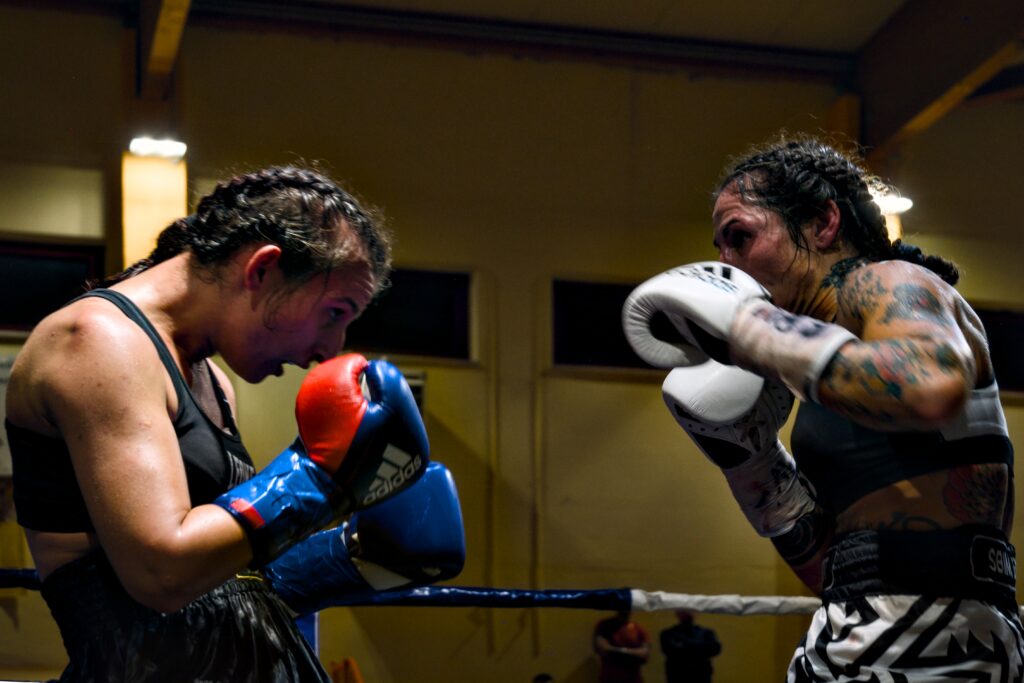
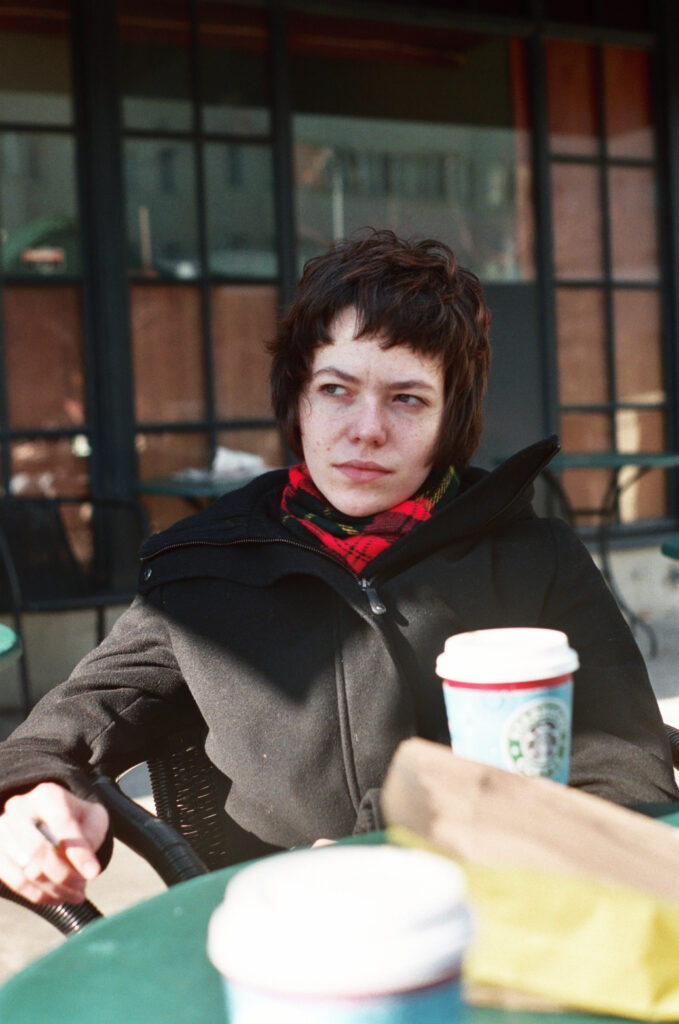
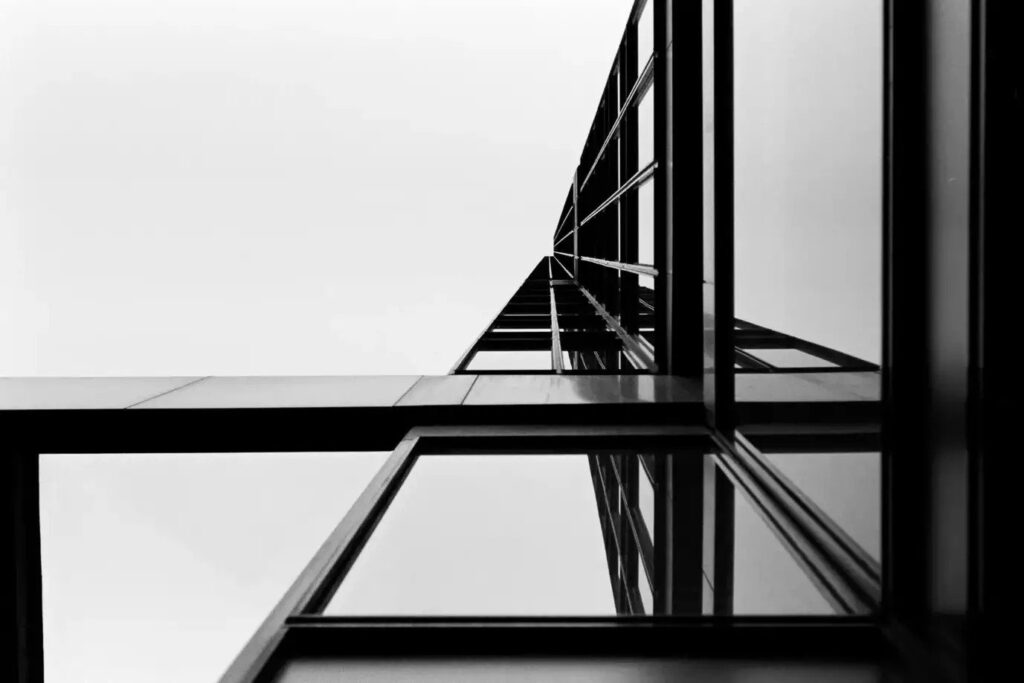


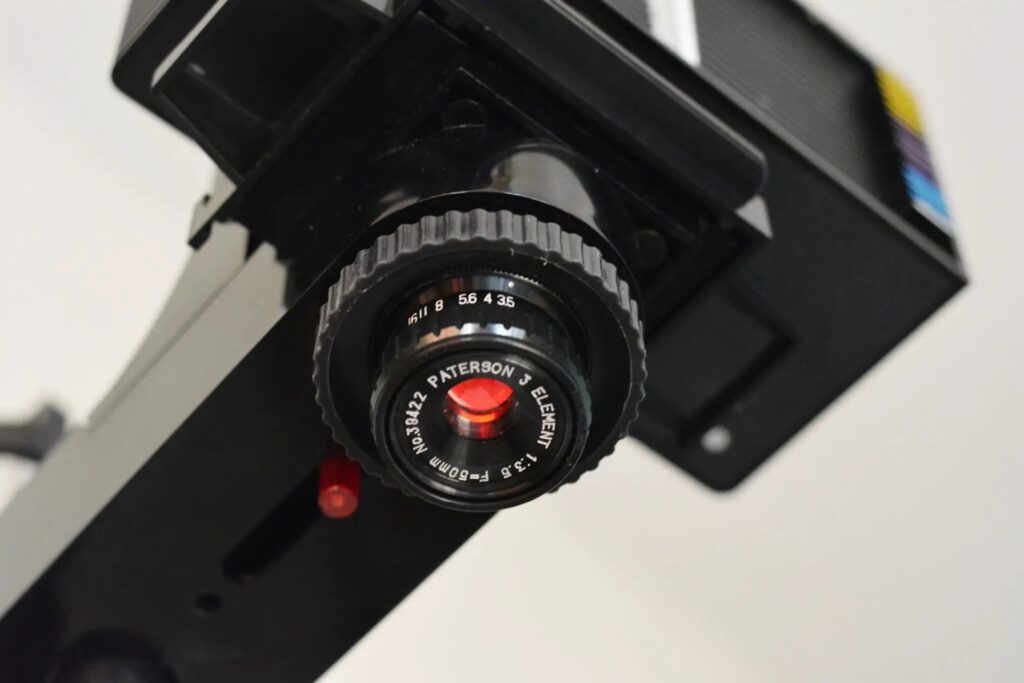
Comments
thorsten on Fujifilm Velvia 50 and an Aesthetic of Necessity
Comment posted: 19/08/2025
Comment posted: 19/08/2025
Scott Micciche on Fujifilm Velvia 50 and an Aesthetic of Necessity
Comment posted: 19/08/2025
Comment posted: 19/08/2025
Curtis Heikkinen on Fujifilm Velvia 50 and an Aesthetic of Necessity
Comment posted: 19/08/2025
Comment posted: 19/08/2025
Gary Smith on Fujifilm Velvia 50 and an Aesthetic of Necessity
Comment posted: 19/08/2025
Although there was a time that I travelled with a slide carousel, I have never (as far as I can recall) shot any slides. Yours look great! When will we see you book?
Comment posted: 19/08/2025
Comment posted: 19/08/2025
Comment posted: 19/08/2025
Comment posted: 19/08/2025
Jeffery Luhn on Fujifilm Velvia 50 and an Aesthetic of Necessity
Comment posted: 19/08/2025
Comment posted: 19/08/2025
James Evidon on Fujifilm Velvia 50 and an Aesthetic of Necessity
Comment posted: 19/08/2025
Comment posted: 19/08/2025
CHRISTOF RAMPITSCH on Fujifilm Velvia 50 and an Aesthetic of Necessity
Comment posted: 19/08/2025
Comment posted: 19/08/2025
Geoff Chaplin on Fujifilm Velvia 50 and an Aesthetic of Necessity
Comment posted: 20/08/2025
Great images despite my rant, and well done for using slow shutter speeds when required.
Comment posted: 20/08/2025
Comment posted: 20/08/2025
Alexander Seidler on Fujifilm Velvia 50 and an Aesthetic of Necessity
Comment posted: 20/08/2025
Different to some experimental films of today the look has a "harmony" of colors.
i like the aesthetics and your shots.
Comment posted: 20/08/2025
Simon Foale on Fujifilm Velvia 50 and an Aesthetic of Necessity
Comment posted: 20/08/2025
Comment posted: 20/08/2025
Ibraar Hussain on Fujifilm Velvia 50 and an Aesthetic of Necessity
Comment posted: 20/08/2025
Comment posted: 20/08/2025